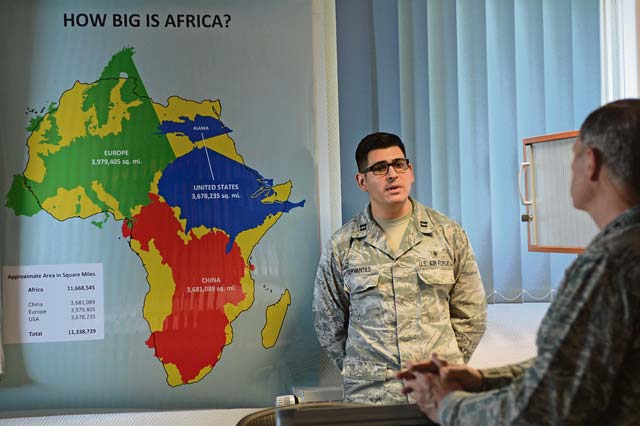
All around the globe the U.S. Transportation Command’s driving force provides the U.S. with one of the most responsive strategic mobility capabilities in the world by coordinating the safe transportation of wounded, sick and injured patients back to the states.
USTRANSCOM is a unified, functional combatant command that provides support to eight other combatant commands, military services, defense agencies and other government organizations.
One of the major aspects of USTRANSCOM is the Movement Requirement Center in Europe, which is one of four patient requirement centers in the Air Force. Their area of responsibility includes the European Command and the African Command.
“Here at the MRC, we coordinate with personnel downrange, stateside patients and with the commands, helping them figure out where their Soldiers and Sailors, Airman and Marines are going,” said Maj. Randy Snoots, USTRANSCOM patient movement clinical coordinator.
The team located at Ramstein performs an estimated 23 missions per month, providing transportation for roughly 380 patients.
“We not only track all the EUCOM and AFRICOM missions around here,” said Staff Sgt. Elizabeth Cardoza, USTRANSCOM patient movement controller. “We also track the Central Command’s mission patients that are coming here from downrange. We interact with the Contingency Aeromedical Staging Facility to inform them what time the patients will be coming in, so they can pick them up and take them for monitoring.”
After verifying the patient’s information and their ability to be transported, the USTRANSCOM will then move the individual to where they need to go.
“We ensure patients move from point A to point B safely,” said Capt. Eddy Cervantes, joint patient movement operations officer. “If not for us, they might end up all over the place and with all kinds of safety issues. Here at
USTRANSCOM, safety is always our No. 1 priority.”


